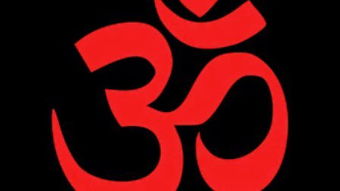
Hinduism Om: A Comprehensive Overview
Embarking on a journey through the rich tapestry of Hinduism, you are about to delve into the profound significance of the sacred syllable “Om.” This article aims to provide you with a detailed and multi-dimensional introduction to the concept of Om in Hinduism, exploring its origins, symbolism, rituals, and its place in the broader context of Hindu philosophy and spirituality.
Origins of Om

The syllable “Om” is considered to be the primordial sound from which the entire universe emerged. It is believed to be the first sound that was ever heard and is often referred to as the “seed” or “source” of all sounds. In Hinduism, Om is considered to be the ultimate reality, the ultimate truth, and the ultimate power.
Symbolism of Om

Om is a powerful symbol in Hinduism, representing the unity of the individual soul with the universal soul. It is often depicted as a triangle with a circle at the top, symbolizing the three gunas (qualities) of nature: sattva (purity), rajas (passion), and tamas (inertia). The triangle also represents the three worlds: the physical world, the world of the mind, and the world of the soul. The circle at the top represents the infinite nature of the universe and the eternal cycle of birth and rebirth.
Rituals Involving Om

Om is an integral part of many Hindu rituals and practices. It is often chanted during meditation, yoga, and other spiritual practices. In meditation, Om is used to focus the mind and bring about a state of deep relaxation and inner peace. During yoga, Om is chanted at the beginning and end of each session to signify the union of the individual with the universal. In rituals, Om is chanted to invoke the divine presence and to seek blessings.
| Ritual | Usage of Om |
|---|---|
| Meditation | Chanted to focus the mind and bring about inner peace |
| Yoga | Chanted at the beginning and end of each session |
| Rituals | Chanted to invoke the divine presence and seek blessings |
Philosophical Significance of Om
In Hindu philosophy, Om is considered to be the ultimate reality, the Brahman. It is the ultimate truth that is beyond the realm of the senses and can only be experienced through spiritual realization. The Upanishads, the ancient Hindu scriptures, describe Om as the ultimate reality, the ultimate truth, and the ultimate power. It is believed that by chanting Om, one can attain knowledge of the Brahman and achieve liberation from the cycle of birth and death.
Cultural Significance of Om
Om is not only a religious symbol but also a cultural symbol in Hindu society. It is often seen in various forms of art, architecture, and literature. In India, Om is considered to be a sacred symbol and is often used in religious ceremonies and festivals. It is also used in various forms of music and dance, representing the divine presence and the eternal cycle of life.
Conclusion
Om, the sacred syllable in Hinduism, holds immense significance in the religious, philosophical, and cultural aspects of Hindu life. Its origins, symbolism, rituals, and philosophical significance make it a powerful and profound symbol that continues to be revered and celebrated by millions of Hindus around the world. As you explore the depths of Hinduism, the syllable Om will undoubtedly play a significant role in your understanding and appreciation of this ancient and vibrant tradition.



